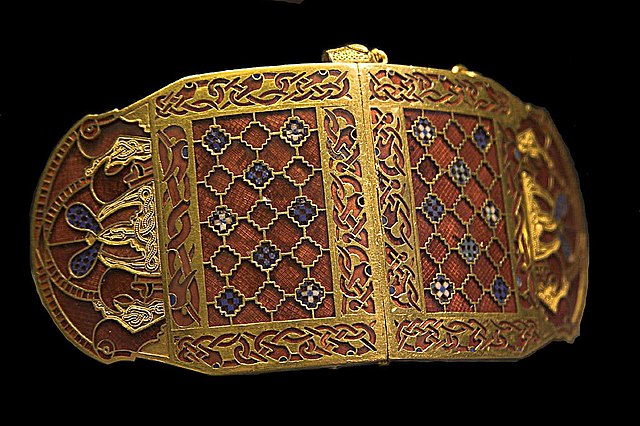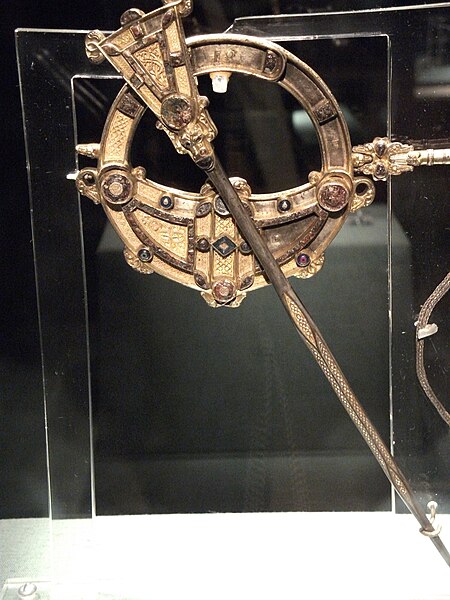Insular art, also known as Hiberno-Saxon art, was produced in the post-Roman era of Great Britain and Ireland. The term derives from insula, the Latin term for "island"; in this period Britain and Ireland shared a largely common style different from that of the rest of Europe. Art historians usually group Insular art as part of the Migration Period art movement as well as Early Medieval Western art, and it is the combination of these two traditions that gives the style its special character.
This page (folio 292r) of the Book of Kells contains the lavishly decorated text that opens the Gospel of John.
David from the Durham Cassiodorus, early 8th century (?), Jarrow
One of hundreds of small initials from the Book of Kells
Early Anglo-Saxon shoulder-clasps from Sutton Hoo, early 7th century. Gold, garnet, and millefiori glass.
Migration Period art denotes the artwork of the Germanic peoples during the Migration period. It includes the Migration art of the Germanic tribes on the continent, as well the start of the Insular art or Hiberno-Saxon art of the Anglo-Saxon and Celtic fusion in Britain and Ireland. It covers many different styles of art including the polychrome style and the animal style. After Christianization, Migration Period art developed into various schools of Early Medieval art in Western Europe which are normally classified by region, such as Anglo-Saxon art and Carolingian art, before the continent-wide styles of Romanesque art and finally Gothic art developed.
Shoulder-clasps from the 7th century Anglo-Saxon ship burial at Sutton Hoo. Alternate view. British Museum.
Germanic fibulae, early 5th century
Purse lid from Sutton Hoo, c. 625
Tara Brooch, front view, early 8th century







